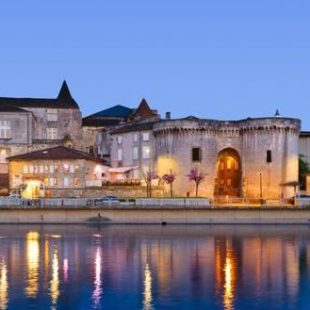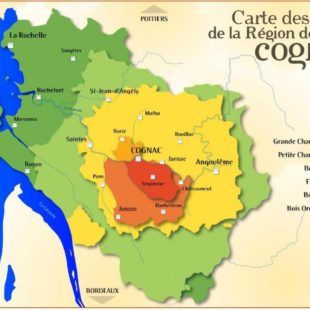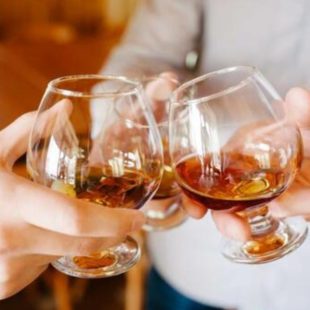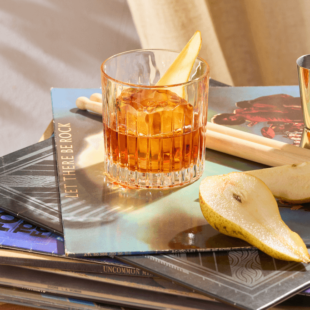What are the different steps to make Cognac?

Also called “eau-de-vie”, the cognac is a spirit that many French people enjoy. The “God’s liqueur” creates conviviality in every occasions. People know about flavour and cognac cocktails, but they are less aware of the production process.
Sommaire
What is Cognac?
In the 16th century, while wine was only distilled one time, the Chevalier de la Croix Maron created the cognac by trying to boil the brouillis . This try resulted in a 70 percent alcohol eau-de-vie. Stored in barrels and adding water during the years, he obtained cognac.
The cognac is a blend of several eau-de-vie from different ages. This combination leads to a plurality of characteristics aromas and flavours that sets a unique quality.
Cognac is produced in France, in the region of the same name. It includes the Charente region and a large part of the Charente Maritime. The Cognac region goes also to the Deux Sèvres and small parts of the Dordogne. The different production stages of the spirit need to follow some regulations and rules set by the BNIC (Bureau Interprofessionnel du Cognac) such as the ageing in oak barrels in order to be able to qualify the product as cognac. Previously we talked about brandy (if the geographical area and the regulations are not respected).
Cognac harvest
Harvests usually begins between the end of September and the beginning of October, when grapes are matured. As for every product made from wine, there are controls in terms of the maturing of the vineyard. The appellation Cognac is made of 6 different crus: Grande Champagne, Petite Champagne, Borderies, Fins Bois, Bons Bois and Bois Ordinaires. According to the law, is only produced in this area.
The grape must comes from white grape varieties: the Colombard, the Montils, the Folle Blanche, the Ugni Blanc or the Semillon. The Ugni Blanc is nevertheless the most used for cognac. The grapes are pressed just after the harvest. The pressing gives a fresh must that will immediately be fermented to become wine.
The Charente double distillation
Originally, the wine produced around the Cognac region was distilled only once just to preserved it. The result wasn’t so great. This first try was mostly used as blending. The production of cognac we know today requires a double distillation. This method called “distillation à la Charentaise” is realised in a copper still with a standardised capacity according to the traditions of the region.
The distillation heats the wine and separates it from the dregs. The distillate is then distilled a second time, this is called “la bonne chauffe”. During the Bonne chauffe the distiller will sperate heads (first distillate cooling), the heart and the tails (last liquid) to keep only the heart, an eau-de-vie between 70 and 72% alcohol. The heart will be then stored in oak barrels.
Aging in oak barrels
Before being tasted, cognac needs to be aged in barrels made from oak trees. This ageing is natural and allow the eau-de-vie to develop different aromas over the time. The barrels are made according to the traditions of the region. The eau-de-vie made after the double distillation needs to be placed in barrels for a long time to give to the cognac its unique colour and the aromas.
Only French oak trees can be used for Cognac barrels because of its sturdiness. The cognac is placed in barrels for at least 3 years from the April 1st of the year of the harvest. It is the minimal duration authorized to use the name Cognac and get the mention VS (Very Special). All this occurs in the cellar allowing to age and to stock the eau-de-vie until the bottling.
Blending
Once distilled and aged, cognac is only losing a small amount of alcohol each year. The step of reduction consists in diluting the cognac with water slowly to reduce the alcohol level until 40%.
The cognac eau-de-vie is a blend of different cognacs from different ages. The role of the Cellar Master is to select the eau-de-vie and decides to stop their ageing when it has reached its maximum potential. He selects eau-de-vie to create a unique product.
Bottling and labelling
The bottling is made once the cognac has reached the recommended alcohol level. For this part, it’s either the producers do the bottling themselves or they ask a local bottling company.
The labelling on the other hand, needs to respect specific rules. There are mandatory fields for the designation according to the origin of the product, the grape varieties used and the ageing.

 French
French